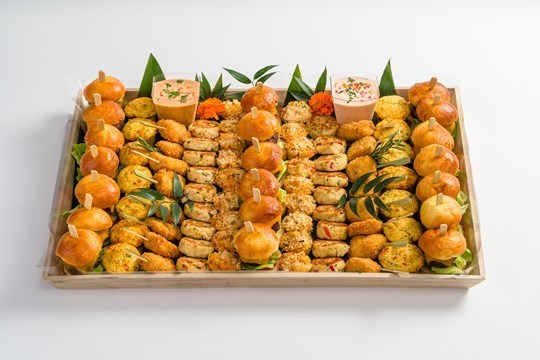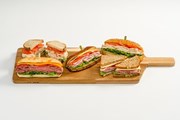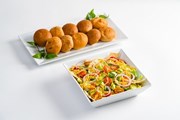Planning Your Catering Menu
When planning your catering menu, it is crucial to carefully consider the type of event and the time of day it will be held. The nature of the event, whether it is a formal dinner, a casual gathering, a business luncheon, or a wedding reception, will dictate the style and selection of food to be served. Additionally, the time of day plays a significant role in determining the type of dishes that would be suitable – for example, brunch events would require breakfast and lunch options. It's essential to tailor the menu to match the ambiance and purpose of the occasion, ensuring that the food complements the overall experience for the guests.
When planning a catering menu for a party, it is crucial to determine the dietary preferences and restrictions of your guests. This step ensures that all attendees can enjoy the food offerings without any concerns. By proactively gathering information on dietary needs, such as allergies, intolerances, and lifestyle choices, you demonstrate thoughtfulness and consideration for your guests' well-being. Additionally, accommodating various dietary requirements can enhance the overall guest experience and make them feel valued and respected. This attention to detail can set your catering service apart and leave a lasting impression on your clients and their guests.
When planning a catering menu, it's crucial to calculate the quantity of food required accurately by considering the number of guests attending the event. A general rule of thumb is to estimate around 1.5 times the amount of food for a full meal per person to ensure that there is enough variety and plenty to go around. Factors such as the duration of the event, the type of dishes being served, and the eating habits of the guests should also be taken into consideration. It's better to have a slight surplus than to risk running out of food, as running out can leave a negative impression on attendees. Proper planning and accurate quantity estimation will help prevent both wastage and shortages, ultimately contributing to the success of the catering experience.
Appetizers and Finger Foods
In catering a party, it is crucial to offer a variety of bite-sized options to cater to different tastes and preferences. Miniature versions of popular dishes or creative appetizers can add a fun and interactive element to the event. Guests appreciate having a diverse selection of small bites to sample, allowing them to enjoy a range of flavors without committing to a full meal. Finger foods like sliders, mini tacos, or stuffed mushrooms are not only visually appealing but also convenient for guests to enjoy while mingling. Ensuring a mix of textures, flavors, and dietary options in your bite-sized offerings will elevate the overall dining experience and leave a lasting impression on attendees.
When planning your catering menu, it is crucial to consider the dietary preferences and restrictions of your guests. Including vegetarian and gluten-free choices ensures that all attendees can enjoy the offerings without any concerns. Vegetarian options can range from fresh salads to hearty vegetable skewers, appealing to those who prefer plant-based fare. Similarly, incorporating gluten-free selections, such as quinoa salads or rice paper rolls, caters to those with gluten sensitivities or celiac disease. By offering diverse choices that cater to different dietary needs, you demonstrate thoughtfulness and inclusivity in your catering approach, enhancing the overall dining experience for all guests.
When planning the appetizer and finger food selection for your party catering, consider the elegant and versatile option of serving charcuterie boards or cheese platters. These sophisticated spreads not only offer a variety of flavors and textures but also create a visually appealing presentation that can impress your guests. Charcuterie boards typically include a selection of cured meats, cheeses, fruits, nuts, and spreads, providing a perfect balance of savory and sweet components. Cheese platters, on the other hand, focus on a variety of cheeses paired with accompaniments like crackers, bread, honey, and olives. Incorporating these options adds a touch of sophistication and ensures a delightful culinary experience for your event attendees.
Main Course Options
When selecting proteins for your catering menu, aim for variety to cater to different tastes and dietary preferences. Including options like chicken, beef, and seafood allows you to offer a well-rounded selection that appeals to a broader range of guests. Chicken dishes are versatile and popular, while beef entrees add a hearty touch to the menu. Seafood options can bring a touch of elegance and sophistication to your offerings. By incorporating a mix of these protein choices, you can create a balanced menu that caters to meat lovers as well as those with specific dietary requirements, ensuring a satisfying dining experience for all attendees.
For guests who follow a vegetarian or vegan diet, offering a diverse selection of entrees is essential. Vegetarian options can include dishes like grilled vegetable skewers, stuffed mushrooms, or quinoa-stuffed bell peppers. For vegan guests, consider dishes such as coconut curry with tofu, vegan sushi rolls, or lentil shepherd's pie. Including these options ensures that non-meat eaters have satisfying and flavorful choices to enjoy. Incorporating plant-based proteins like tofu, tempeh, or legumes not only caters to dietary restrictions but also adds variety and nutrition to the menu. By providing these alternatives, you demonstrate thoughtfulness and inclusivity towards all your guests' dietary needs.
When planning the catering menu for a party, consider incorporating buffet-style setups to enhance flexibility and cater to varying guest preferences. Buffet-style service allows guests to choose from a variety of dishes, accommodating different dietary needs and preferences. This setup also enables guests to control their portion sizes and experiment with different flavor combinations. Additionally, buffet-style service promotes social interaction as guests move around the food stations, fostering a convivial atmosphere. By offering a buffet, you can create a versatile dining experience where guests feel empowered to customize their plates according to their preferences, ensuring a more inclusive and enjoyable event for all attendees.
Side Dishes and Salads
When planning the side dishes and salads for your catering menu, it is essential to include a selection of salads with different dressings. Offering a variety of dressings allows guests to customize their salads to suit their taste preferences. Consider classic options like ranch, balsamic vinaigrette, and Caesar alongside unique choices such as citrus ginger or honey mustard. Including a range of dressings not only enhances the flavors of the salads but also caters to diverse palates. Additionally, ensure that the dressings are served on the side to maintain the freshness and crispness of the salad greens until they are ready to be enjoyed by the guests.
When selecting side dishes for a catered party, it is essential to choose options that complement the main courses being served. These side dishes should not only enhance the flavors of the entrees but also provide a balanced and harmonious dining experience for guests. Consider the texture, flavor profile, and visual appeal of the main dishes when selecting sides. For example, if you are serving a rich and hearty main course, opt for lighter sides, such as crisp salads or roasted vegetables, to create contrast. Additionally, matching the cuisines or flavor profiles of the main courses with the sides can create a cohesive and satisfying meal for attendees.
When planning side dishes for catering a party, it is essential to keep dietary restrictions in mind to ensure that all guests can enjoy the meal. Incorporating a variety of options that cater to different dietary needs, such as vegetarian, vegan, gluten-free, or dairy-free choices, demonstrates thoughtfulness and inclusivity. Labeling dishes with clear indications of ingredients can help guests with specific dietary requirements easily identify what they can safely consume. Additionally, offering dishes that are naturally allergen-free or customizable can further accommodate guests with food sensitivities, ensuring that everyone can partake in the culinary delights without worry or hesitation.
Desserts and Sweets
When selecting desserts for your party catering menu, it's essential to offer a diverse range of sweet treats to cater to various preferences. Including a mix of desserts such as decadent cakes, classic cookies, and refreshing fruit platters can satisfy different tastes and dietary needs. Cakes provide a rich and indulgent option for those with a sweet tooth, while cookies offer a portable and easy-to-eat choice. Fruit platters, on the other hand, provide a lighter and healthier alternative that appeals to guests looking for a fresh and refreshing option. By providing this variety, you can ensure that all your guests find a dessert they enjoy and end the meal on a sweet note.
When planning the dessert selection for your catered party, consider offering a dessert bar with a variety of options to cater to different tastes and preferences. A dessert bar allows guests to choose their favorites, promoting interaction and engagement during the event. Include a range of sweet treats such as cakes, cookies, pastries, and fruit options to appeal to diverse palates. You can also add a DIY element by including toppings, sauces, or condiments for guests to customize their desserts. A dessert bar not only adds visual appeal to the spread but also offers a fun and interactive experience that enhances the overall enjoyment of the party.
When catering a party, it is crucial to accommodate dietary restrictions to ensure all guests can enjoy the food. Offering gluten-free and dairy-free choices is not only considerate but also inclusive. By including these options on your menu, you demonstrate a commitment to catering to diverse dietary needs. Gluten-free options can include dishes made with alternative flours like almond or coconut flour, while dairy-free choices can involve plant-based milks or dairy substitutes. Providing a variety of gluten-free and dairy-free selections ensures that guests with specific dietary requirements can still indulge in delicious offerings, contributing to a positive and inclusive dining experience.
Beverage Options
To enhance the beverage selection at your catered party, it is essential to offer a diverse range of options to cater to different preferences. Alongside the standard choices of water, soft drinks, and juices, consider incorporating specialty beverages such as flavored sparkling water, artisanal sodas, and herbal infusions. Providing a mix of non-alcoholic options allows guests to select beverages that suit their tastes and dietary needs. Additionally, consider offering a selection of garnishes, such as citrus slices or fresh herbs, to add extra flair to the drinks. By diversifying the beverage offerings, you can elevate the overall experience for your guests.
Consider serving alcoholic beverages based on the event and audience to enhance the overall catering experience. For formal gatherings, opt for a selection of wines, champagnes, and signature cocktails to elevate the sophistication of the event. Alternatively, for casual parties, offer a range of beers, ciders, and mixed drinks to cater to a more relaxed atmosphere. It is crucial to consider the preferences of your guests when deciding on alcoholic beverages, ensuring there are options for both non-drinkers and those who enjoy alcoholic drinks. By tailoring the drink selection to the event's tone and the guests' preferences, you can create a well-rounded catering menu that complements the overall experience.
For a well-rounded catering menu, it is essential to offer coffee and tea options for after-dinner drinks. These choices provide a comforting and soothing end to the meal and serve as a palate cleanser. Coffee can be served in both regular and decaffeinated options to cater to varying preferences among guests. For tea, consider a selection of herbal, black, green, and fruit-infused teas to accommodate different tastes. Providing hot beverages also enhances the overall dining experience, giving guests a moment to relax and mingle after their meal. Make sure to offer cream, sugar, and other accompaniments to customize the drinks to individual preferences.
Presentation and Serving Styles
To enhance the overall presentation and create a cohesive aesthetic, it is crucial to use serving platters and bowls that align with the event theme. Matching the serving ware to the theme adds a touch of elegance and sophistication to the dining experience. For instance, if you are hosting a formal dinner party, opt for classic and elegant serving platters in neutral colors. Alternatively, for a themed event such as a beach party, consider using vibrant and quirky serving bowls to reflect the theme and create a fun atmosphere for your guests. The attention to detail in choosing appropriate serving ware contributes to a visually appealing and well-coordinated catering setup.
When catering a party, opt for eco-friendly disposable wares to not only streamline cleanup but also reduce environmental impact. Look for biodegradable or compostable plates, utensils, and cups made from materials like bamboo, sugarcane fiber, or cornstarch. These sustainable options are both sturdy and stylish, enhancing the presentation of your food while demonstrating your commitment to eco-conscious practices. Not only do eco-friendly disposables minimize waste in landfills, but they also show your guests that you prioritize sustainability without sacrificing convenience. Choosing these wares aligns with modern preferences towards socially responsible and environmentally friendly catering choices.
To elevate the presentation of your catering service and create a more sophisticated atmosphere, consider hiring professional waitstaff. Waitstaff can provide not only efficient table service but also add a touch of elegance to your event. Their presence can enhance the overall guest experience by ensuring that food is served promptly and with finesse. Additionally, having waitstaff allows you to focus on other aspects of the event, such as attending to guests or addressing any issues that may arise. Their professional demeanor and expertise in serving can contribute to a seamless and upscale dining experience for your guests.
Cost-Effective Catering Tips
Buying ingredients in bulk is a cost-effective strategy for catering a party. Purchasing items such as meats, grains, and spices in larger quantities can significantly reduce the overall cost per serving. This approach not only saves money but also ensures a consistent supply of ingredients throughout the event. When buying in bulk, it is essential to consider storage requirements to maintain freshness and quality. Additionally, coordinating with suppliers or wholesalers can lead to additional discounts or special pricing arrangements. By leveraging the benefits of buying in bulk, caterers can optimize their budget without compromising on the quality or variety of menu offerings.
To cut costs and add a personal touch to your party catering, consider DIY-ing some elements like simple appetizers or desserts. Homemade items not only showcase your cooking skills but also allow for customization to suit your guests' preferences. For appetizers, you could prepare easy-to-assemble bruschetta or cheese and charcuterie boards. For desserts, baking cookies or brownies can be cost-effective and crowd-pleasing. Additionally, creating your own items can help you control the ingredients used, making it easier to accommodate any dietary restrictions or preferences among your guests. Experiment with different recipes to find options that are both delicious and budget-friendly.
When catering a party, selecting seasonal produce can be a strategic way to manage costs without compromising freshness or flavor. Seasonal fruits and vegetables are generally more abundant and readily available, leading to lower prices compared to off-season produce. By incorporating seasonal ingredients into your menu, you can take advantage of their peak quality and affordability. Additionally, using seasonal produce allows you to showcase the best flavors of the time, enhancing the overall dining experience for your guests. Consider crafting dishes that highlight the unique characteristics of each season's bounty, adding a touch of freshness and creativity to your catering offerings while being mindful of your budget.
Conclusion
By utilizing the suggested food ideas for catering a party, you are positioning yourself to deliver an exceptional and delightful dining experience for your guests. The thoughtful selection of menu items tailored to the event type and guest preferences will elevate the overall ambiance and enjoyment of the gathering. Providing a diverse range of appetizers, main courses, side dishes, desserts, and beverages ensures that every guest finds something to savor. Attention to detail in presentation and serving styles adds a touch of elegance to the occasion. Incorporating cost-effective catering tips allows you to manage your budget efficiently while maintaining high-quality food offerings. Ultimately, the success of your event hinges on the culinary experience you curate, making these food ideas essential for hosting a successful and memorable party."




